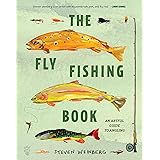The profound allure of the underwater world, especially when bathed in the mystique of night, presents an unparalleled challenge and reward for the dedicated diver. As the accompanying video vividly portrays, a solo night spearfishing expedition transcends mere sport, evolving into a sophisticated interplay of skill, specialized equipment, and an intimate understanding of marine ecology. This endeavor demands meticulous preparation, an expert grasp of advanced diving techniques, and an unwavering commitment to safety protocols. Navigating the darkened depths, where familiar daytime landscapes are transformed into an alien environment, is an experience reserved for those with extensive training and profound respect for the ocean’s nocturnal rhythm.
The Allure and Rigors of Night Spearfishing
Engaging in night spearfishing is often considered the pinnacle of underwater hunting, offering a unique set of challenges and opportunities distinct from daytime pursuits. The aquatic realm undergoes a dramatic transformation after sunset; diurnal species retreat, while a vibrant array of nocturnal creatures emerges from their hiding places. This shift in marine activity provides an entirely different hunting ground, where specific prey, often more active or less wary under the cover of darkness, can be targeted. However, the inherent risks associated with reduced visibility, potential disorientation, and the presence of larger, more active predators necessitate an elevated level of situational awareness and technical proficiency.
Understanding Nocturnal Marine Behavior
Successfully navigating and hunting during a night spearfishing dive hinges critically upon a diver’s understanding of how marine life adapts to the absence of light. Many reef-dwelling fish enter a state of torpor or seek shelter within crevices and caves, making them less reactive but also harder to spot. Conversely, various cephalopods, crustaceans, and certain fish species become more active, venturing out to feed under the cloak of night. The phenomenon of phototaxis, where some marine organisms are attracted to light, can be leveraged by spearfishers, though it also attracts larger pelagic predators that may be drawn to the same light source. A thorough knowledge of target species’ nocturnal habits, including their feeding patterns and resting places, is paramount for an effective and ethical hunt.
Essential Gear for a Solo Night Dive
The equipment configuration for a solo night spearfishing dive is substantially more complex than that required for daylight operations, necessitating redundancy and specialized tools for illumination and navigation. Reliability is not merely a convenience but a critical factor in mitigating the heightened risks of low-visibility environments. Every piece of gear, from primary dive lights to signaling devices, must be rigorously checked and prepared before descent. The potential for equipment failure in the deep, dark ocean underscores the importance of having multiple backup systems and being proficient in their deployment under stressful conditions.
Illumination Systems and Redundancy
Effective lighting is the single most crucial element for any night diver, and for the night spearfisher, it extends beyond mere visibility to target acquisition. A powerful primary dive light, often with adjustable beam focus and intensity, is essential for cutting through the darkness and identifying prey. This primary light must be complemented by at least one, and preferably two, secondary or backup lights, each independently powered and robust enough to function as a primary. Chemical glow sticks or small, continuous light markers attached to equipment or the diver can provide ambient orientation cues and assist in maintaining awareness of one’s surroundings. Furthermore, surface marker buoys equipped with strobes or reflective tape are critical for surface visibility and recovery by support vessels, if applicable.
Specialized Spearfishing Equipment
Beyond standard diving gear, specific spearfishing tools are adapted for the rigors of night hunting. A powerful speargun, often a pole spear or a shorter band gun, is preferred for the typically closer-range engagements encountered in low light. Reel guns are advantageous for managing retrieved fish and preventing entanglement. A sturdy dive knife or cutting tool is indispensable, serving not only as a defense mechanism but also for cutting line or disentangling fishing gear. Stringers for holding caught fish must be robust and easily accessible, designed to secure the catch without posing a risk of entanglement or attracting unwanted attention from larger predators. These items collectively contribute to the safety and efficacy of the night spearfishing endeavor, allowing for efficient operations in a challenging environment.
Advanced Safety Protocols for Solo Night Spearfishing
The decision to undertake solo night spearfishing carries a significant increase in inherent risk, demanding an exceptionally high standard of safety planning and execution. The absence of a buddy to assist in emergencies, combined with the sensory deprivation of darkness, elevates the consequences of even minor mishaps. Therefore, a comprehensive set of advanced safety protocols must be meticulously followed, encompassing everything from exhaustive pre-dive checks to detailed emergency response strategies. These protocols are designed not only to prevent incidents but also to ensure the diver’s capacity for self-rescue and self-sufficiency in a potentially unforgiving environment.
Pre-Dive Planning and Communication
Before any solo night spearfishing dive, an exhaustive pre-dive plan is non-negotiable. This plan encompasses a thorough assessment of local weather conditions, including sea state, currents, and potential changes in visibility. The chosen dive site must be intimately familiar to the diver, with known entry and exit points, potential hazards, and depth contours fully understood. A detailed float plan, outlining the diver’s intended route, estimated dive time, and emergency contact information, must be shared with a reliable land-based contact. All equipment, including redundant systems, is subjected to rigorous functionality checks, ensuring every component is in optimal working order. This meticulous preparation forms the bedrock of a safe solo night diving experience.
Underwater Navigation and Orientation
Maintaining accurate orientation and navigation underwater is vastly more challenging during a night dive due to the lack of visual references and the potential for sensory disorientation. Traditional navigation tools such as a compass and depth gauge become absolutely critical, often supplemented by wrist-mounted dive computers with GPS capabilities for surface navigation before and after the dive. Natural navigation cues, such as current direction or the contours of a known reef, are utilized with extreme caution as they are often obscured by darkness. For solo dives, the concept of a “virtual buddy line” — a mental or pre-planned connection to a specific return point — is employed to prevent aimless wandering or becoming lost in the expansive darkness. Constant awareness of one’s position relative to the boat or shore is maintained through frequent checks.
Emergency Procedures and Self-Sufficiency
Given the solo nature of the dive, the diver must be entirely self-sufficient in handling any emergency situation that may arise. This includes proficiency in managing equipment malfunctions, such as light failure or speargun issues, without external assistance. Advanced first aid training, particularly for marine-related injuries like stings or cuts, is essential, and a compact, waterproof first aid kit is carried. Procedures for an emergency ascent, dealing with entanglement, or confronting aggressive marine life are rehearsed mentally and physically. The ability to problem-solve calmly and effectively under pressure is a hallmark of the experienced solo night spearfisher, emphasizing the need for robust training and mental fortitude.
Mastering Technique in Low Visibility
The act of spearfishing itself undergoes significant adaptation when performed under the cover of night. The techniques employed for approaching, identifying, and targeting fish must be refined to account for the dramatically reduced visibility and altered behavior of marine life. Success in night spearfishing is often attributed to patience, precise movements, and an intimate understanding of how light interacts with the underwater environment. Divers must adjust their hunting strategies, relying more heavily on auditory cues, tactile feedback, and their focused beam of light to locate and harvest prey. The aim is always to achieve a quick, humane kill while minimizing disturbance to the surrounding ecosystem.
Stalking and Approach Strategies
Effective stalking in low visibility necessitates an extremely slow and deliberate approach, minimizing water disturbance and abrupt movements that could alert nocturnal prey. Light discipline is paramount; the dive light is used strategically, often in short bursts or focused beams, rather than wide sweeps that might startle fish or attract larger predators. Sometimes, the light is used to “freeze” certain species, utilizing their phototactic response, allowing for a closer approach. Divers learn to utilize the available light, often the moon or artificial sources from the surface, to their advantage, creating silhouettes or highlighting hidden forms. Patience becomes a primary virtue, as targets are often identified only at very close range.
Target Identification and Ethical Harvesting
One of the most critical aspects of night spearfishing is the accurate identification of target species under challenging lighting conditions. Misidentification can lead to harvesting protected species, undersized fish, or non-target organisms, which is both unethical and potentially illegal. Divers must possess an expert knowledge of local marine fauna, including their nocturnal appearance and distinguishing features, even in dim light. The beam of the dive light is used to scrutinize the fish, confirming its species, size, and health before a shot is taken. This commitment to ethical harvesting ensures sustainable practices and demonstrates respect for marine life and conservation efforts. Only clear, high-percentage shots are attempted, aiming for a humane and swift kill.
Environmental Stewardship and Ethical Considerations
Participating in any form of marine resource harvesting, especially a specialized activity like night spearfishing, carries significant environmental responsibilities. The unique vulnerabilities of nocturnal ecosystems necessitate an even greater degree of caution and ethical conduct from the diver. Upholding the principles of environmental stewardship ensures that this adventurous pursuit remains sustainable for future generations and minimizes negative impacts on sensitive marine habitats. A responsible night spearfisher not only abides by legal regulations but also adopts a broader ecological perspective, recognizing their role within the delicate balance of the ocean.
Minimizing Impact on Nocturnal Ecosystems
Night diving and spearfishing activities have the potential to disrupt the delicate balance of nocturnal marine ecosystems if not executed with extreme care. The indiscriminate use of powerful lights can disorient light-sensitive organisms, interfere with their feeding or reproductive cycles, and increase their vulnerability to predators. Divers must practice impeccable buoyancy control to avoid contact with the seabed, coral reefs, and other fragile structures, preventing physical damage to habitats. Furthermore, a conscious effort is made to avoid disturbing resting fish or invertebrates that are not targeted, ensuring their natural behaviors remain largely unaffected. The goal is to be an observer and a selective harvester, not a disruptive force.
Adherence to Regulations and Conservation
Strict adherence to all local and national spearfishing regulations is absolutely mandatory, particularly when engaging in night activities. These regulations often include specific size limits for various species, daily bag limits, seasonal closures for spawning periods, and restrictions on the use of certain equipment or methods. Ignorance of the law is not an excuse, and violating these rules can result in severe penalties and contribute to unsustainable fishing practices. Responsible spearfishers are proactive in staying informed about current regulations and actively participate in marine conservation efforts. This commitment to legal and ethical practices is vital for preserving marine biodiversity and ensuring the long-term viability of spearfishing as a respected and responsible activity.








